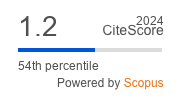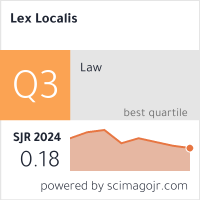Local Government Digital Policy and AI Marketing Innovation: A Multi-level Moderated Mediation Analysis of China's Fresh Corn Industry
DOI:
https://doi.org/10.52152/22.3.170-177(2024)Keywords:
Local government digitalization policy; Artificial intelligence marketing; Agricultural digital transformation; Multi-level analysis; Fresh corn industryAbstract
In the context of agricultural digital transformation, how local government digitalization policies influence enterprise technological innovation has become a critical theoretical and practical issue. This study constructs a multi-level moderated mediation model based on the Technology-Organization-Environment (TOE) framework and Innovation Diffusion Theory to explore how local government digitalization policies affect enterprise AI marketing strategy adoption and market performance in China's fresh corn industry. Using survey data from 128 fresh corn enterprises across 15 provinces and 3,842 consumer questionnaires, we employ Partial Least Squares Structural Equation Modeling (PLS-SEM) for empirical analysis.The findings reveal that: (1) local government digitalization policies significantly promote enterprise AI marketing adoption (β=0.21, p<0.01), which positively impacts market performance (β=0.34, p<0.001), with the model explaining 58.7% of variance (R²=0.587); (2) policy environment characteristics significantly moderate the policy-enterprise relationship, with effects in high-support environments (0.43) being 2.5 times those in low-support environments (0.17); (3) industry competition intensity strengthens the AI adoption-performance relationship (β=0.21, p<0.01); (4) organizational learning capability (indirect effect=0.126) and customer satisfaction (indirect effect=0.187) play partial mediating roles; (5) regional heterogeneity analysis shows policy effects in eastern regions (β=0.38) significantly exceed western regions (β=0.19).This study extends digital governance theory applications in agriculture and provides empirical evidence for local governments to formulate differentiated digital agriculture support policies and for enterprise technological innovation decision-making.
References
Bray, J. (2012) Foreign Direct Investment in Conflict-affected Areas. International Alert. Practice note 3. Available from: http://www.enterprise-development.org/wp-content/uploads/IntlAlert_PracticeNote_FDI_March2010.pdf. [Accessed 7.10.2016].
Dubska, D. (2013) The Czech Banking Sector: Two Decadeswith the Shuttle Changes, Statistika, 93, 1, pp. 71 – 82.
Edwards, Sebastian. (2001) Capital Mobility and Economic Performance: Are Emerging Countries Different?, NBER Working Paper, No. 8076. Cambridge, MA: National Bureau of Economics Research.
Eichengreen, B., and M. Mussa. (1998) Capital Account Liberalization and the IMF, Finance and Development, 35(4), pp. 16-19.
Eurostat. (2017) GDP per capita in PPS, Available from: http://ec.europa.eu/eurostat/tgm/table.do?tab=table&init=1&language=en&pcode=tec00114&plugin=1 [Accessed 23.12.2017].
Kaminsky, G. L. (2005) International Capital Flows, Financial Stability and Growth, DESA Working Paper, No. 10.
Lin, C. H. (2008) Role of foreign direct investment in telecommunication industries: a developing countries’ perspective, Contemporary Management Research, 4(1), pp. 29–42.
Maček, A., and R. Ovin. (2014) Does economic interventionism help strategic industries?, Evidence from Europe. E+M, 17(3), pp. 5-14, doi: 10.15240/tul/001/2014-3-001.
Perez, R. P. (2008) A regional approach to study technology transfer through foreign direct investment: The electronics industry in two Mexican regions, Research Policy, 37 (5), pp. 849-860.
Wise Broker. (2016) Serbian Macro Overview, Available from: http://www.britserbcham.eu/wp-content/uploads/2014/04/Serbian-Macro-Overview_March_2014.pdf . [Accessed 25.12.2016].
World Bank (2017) World development Indicator, Available from: http://databank.worldbank.org/data/reports.aspx?source=world-development-indicators. [Accessed 25.12.2017].
Statistical office of Serbia. (2016) National accounts, Available from: http://www.stat.gov.rs/WebSite/Public/PageView.aspx?pKey=62. [Accessed 25.12.2017].
Downloads
Published
Issue
Section
License
Copyright (c) 2024 Lex localis - Journal of Local Self-Government

This work is licensed under a Creative Commons Attribution-NonCommercial-NoDerivatives 4.0 International License.








